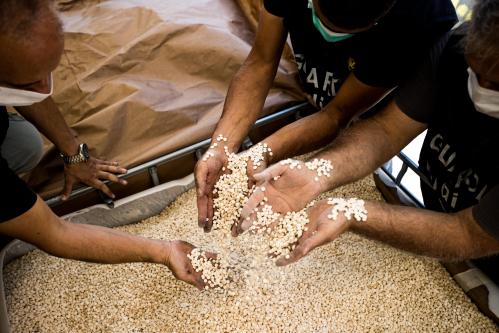The attempted assassination of Saudi Arabia’s counter terrorism chief, Prince Muhammad Bin Nayif, Thursday in Jidda raises disturbing questions about whether al Qaeda’s Saudi branch is recovering from the fierce crackdown Nayif oversaw in the last five years. Al Qaeda in the Arabian Peninsula has already claimed credit for the attack, and jihadist Web sites around the world are buzzing with the news. The Saudis were quick to show MBN (as he is known) is alive. Saudi TV showed him meeting with King Abdullah after the attack to explain what had happened.
Saudi and other Arab press reports indicate the prince was wounded when a suicide bomber approached him at an Iftar meeting Thursday night at his palace in Jidda. It is customary for leading Saudi princes to open their doors after the end of the day during Ramadan, the holy month of fasting, and meet with those who seek an audience. The bomber approached the prince and set off the bomb, killing himself and wounding only the prince, suggesting he must have gotten very close. There is much we still don’t know about the attack, and the Saudis will be characteristically reluctant to say much more. But the attack suggests that there is a terrorist cell with a bomb maker inside the kingdom.
MBN, the son of Minister of the Interior Prince Nayif bin Abdul Aziz, who is a contender to be king after Crown Prince Sultan, orchestrated a very successful crackdown on al Qaeda’s franchise in Saudi Arabia in the last few years. Starting in 2003, al Qaeda launched a devastating series of attacks on American and Saudi targets in the kingdom. Osama bin Laden publicly urged his followers in Saudi Arabia to topple the House of Saud and set up an Islamic emirate. At its height, the terrorist offensive was striking almost daily against the government in virtually every corner of the kingdom: killing police and security officials, blowing up hotels and apartments used by Westerners, striking key oil installations, and attacking the American consulate in Jidda.
MBN led the counterattack, which ruthlessly tracked down the leaders of the al Qaeda Saudi branch. He also helped set up the rehabilitation program to re-educate captured terrorists and get them to renounce al Qaeda. MBN became the man every intelligence service in the world relied on to explain what was going on in the war with al Qaeda. By 2007, Nayif’s campaign had worked, and the kingdom was quiet again. The longest and most sustained violence the kingdom had seen since its birth a century ago was over.
Al Qaeda has been regrouping in next-door Yemen, where security is poor and operational activity is much easier for the group. Several Saudi and Yemeni al Qaeda leaders announced the creation of the new al Qaeda in the Arabian Peninsula early this year. Among them are two Saudis who had been released from Guantanamo by the Bush administration back to Saudi custody, but who had escaped from MBN’s rehab program.
The attack on Nayif was the first significant al Qaeda operation in the kingdom since 2006 and the first-ever assassination attempt on a Saudi prince in the war by al Qaeda. We can be thankful for his survival, but the attack will raise questions everywhere in the region about whether al Qaeda in Saudi Arabia is back.
At the same time as the attack on Nayif, al Qaeda’s No. 2, Ayman Zawahiri, issued a new audio message to the jihadist Web world entitled “The Path of Doom.” In it, Zawahiri promises the American and NATO army in Afghanistan will be defeated along with the Pakistani army fighting the Taliban next door. He also warned that the “apostates” in countries like Saudi Arabia who cooperate with the “Crusaders” would be sent to hell. He did not refer to MBN—but he certainly will the next time we hear from him.



Commentary
Op-edAl-Qaeda’s New Murder Plot
August 28, 2009